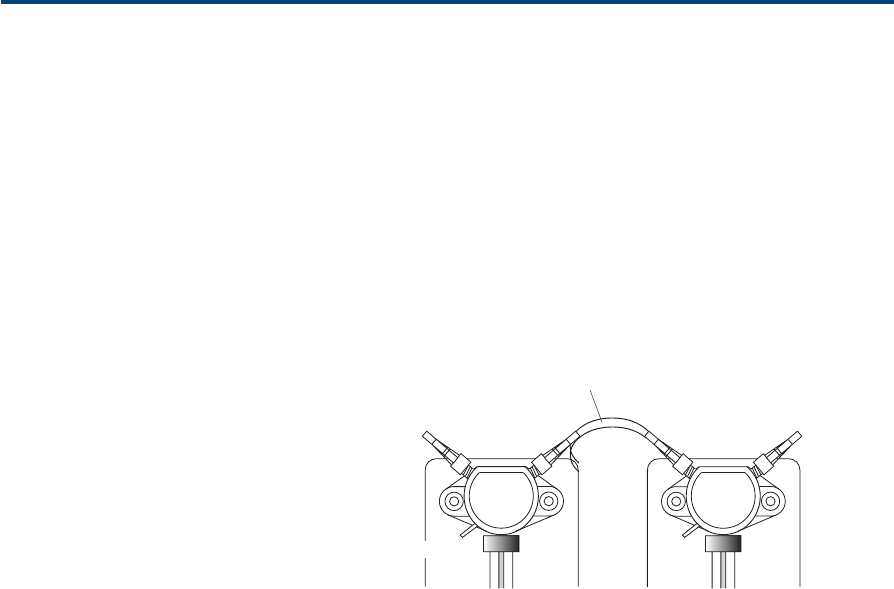
3-5
Installation 3
Connecting the Tubing
After assembling the probe, the other end of the
tubing is installed by screwing the connector into
the right-hand port of the valve. When you use
Gilson Diamond Tips, the special non-tapered
tubing, included in the kit, must be fitted.
Dual-syringe Model
Valve Inlet Tubing
A length of Fluoride Ethylene Propyl-
ene (FEP) tubing, supplied with the
402, is used to connect the inlet port
to the solvent reservoir. Screw the
connector into the inlet port (left-
hand) of the valve and put the other
end into the reservoir. A bottle clip is
provided to hold the tubing securely
in the reservoir.
An alternative tubing, fitted with a
connector at one end and a 20 µm
filter at the other, is available as an
accessory (reference 3645357).
Valve Waste Tubing
Connect the length of tubing (supplied as standard)
to the waste outlet of the valve, and put the other
end into the waste or any other suitable receptacle.
The valve releases liquid through the waste outlet,
if the pressure inside the valve is too high (see
Appendix C, Technical Data).
Connection Tubing (Valve to Tee-junction)
This tubing has connectors at both ends and is used
to connect from the valve outlet port (right-hand) to
the Tee-junction inlet port (left-hand). It is made of
FEP and has the following dimensions: 70 x 3 x 2 mm.
It is autoclavable (20 min. at 0.1 MPa, 121 °C).
Transfer Tubing (Probe)
This tubing (FEP) allows the transfer of samples
aspirated from the probe and prevents the contami-
nation of the syringe(s). The size of transfer tubing
is chosen as a function of the volumes of samples,
reagents, and air gaps that have to be handled via
the probe. The total volume transferred must be
less than the volume of the transfer tubing.
Valve Tee-junction
Transfer tubing
to probe
From
reservoir
Connection tubing
Right
Syringe
To waste
Left
Syringe


















